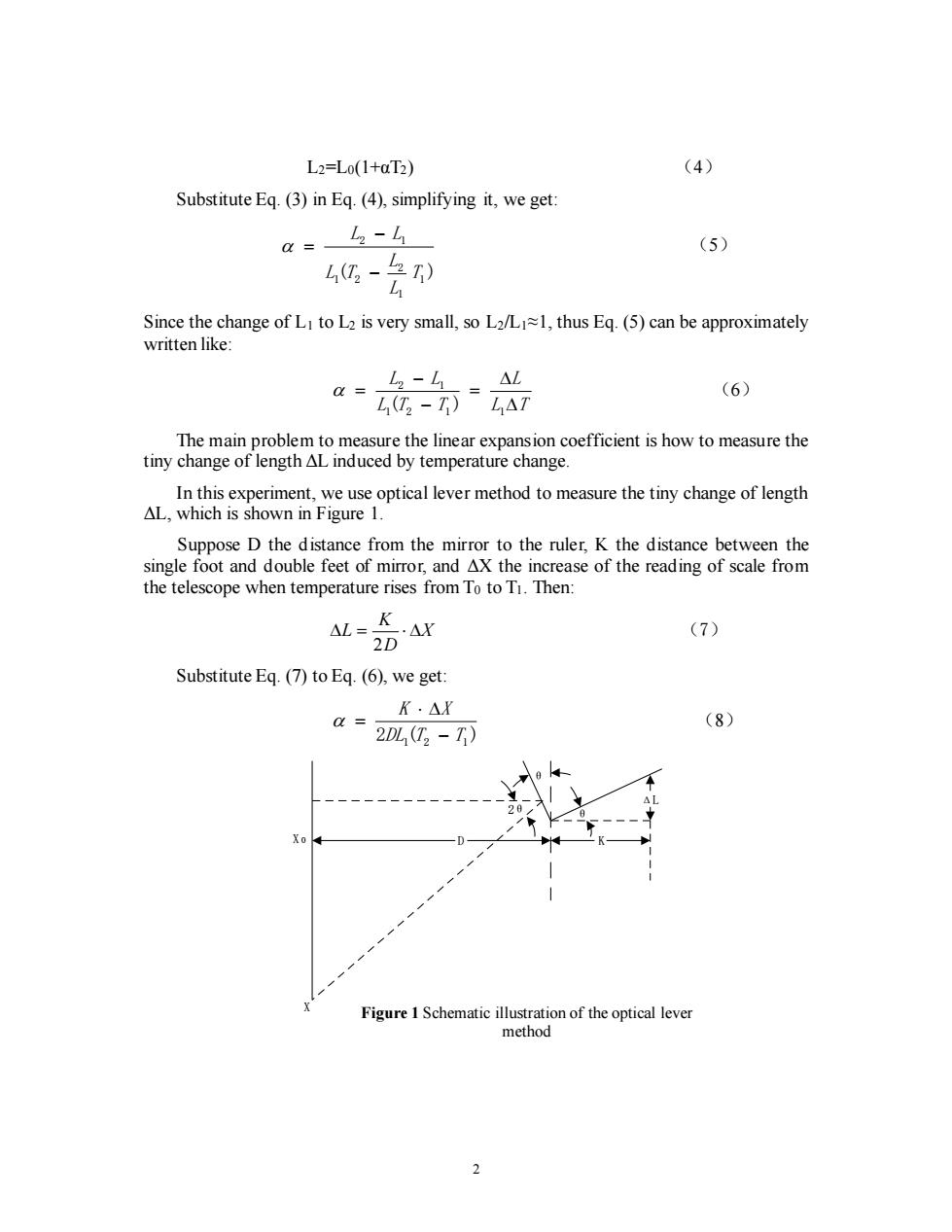正在加载图片...

L2=Lo(1+aT2) (4) Substitute Eq.(3)in Eq.(4),simplifying it,we get: = L2 (5) 4还-先刊 Since the change of LI to L2 is very small,so L2/LI~1,thus Eq.(5)can be approximately written like: a=4-4。 △L (6) L(T2-T)L△T The main problem to measure the linear expansion coefficient is how to measure the tiny change of length AL induced by temperature change. In this experiment,we use optical lever method to measure the tiny change of length AL,which is shown in Figure 1. Suppose D the distance from the mirror to the ruler,K the distance between the single foot and double feet of mirror,and AX the increase of the reading of scale from the telescope when temperature rises from To to Ti.Then: L=K·AX (7) 2D Substitute Eq.(7)to Eq.(6),we get: K·△X a= (8) 2DL(T2-T) Xo Figure 1 Schematic illustration of the optical lever method 22 L2=L0(1+αT2) (4) Substitute Eq. (3) in Eq. (4), simplifying it, we get: ( 1 ) 1 2 1 2 2 1 T L L L T L L − − = (5) Since the change of L1 to L2 is very small, so L2/L1≈1, thus Eq. (5) can be approximately written like: L T L L T T L L = − − = 1 2 1 1 2 1 ( ) (6) The main problem to measure the linear expansion coefficient is how to measure the tiny change of length ΔL induced by temperature change. In this experiment, we use optical lever method to measure the tiny change of length ΔL, which is shown in Figure 1. Suppose D the distance from the mirror to the ruler, K the distance between the single foot and double feet of mirror, and ΔX the increase of the reading of scale from the telescope when temperature rises from T0 to T1. Then: X D K L = 2 (7) Substitute Eq. (7) to Eq. (6), we get: 2DL1(T2 T1 ) K X − = (8) θ θ 2θ ΔL X 0 D K X Figure 1 Schematic illustration of the optical lever method